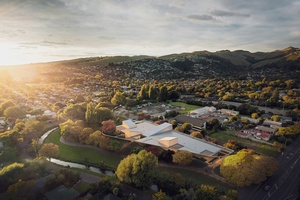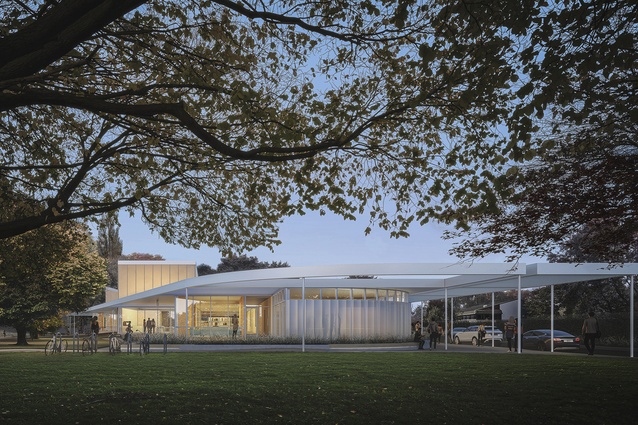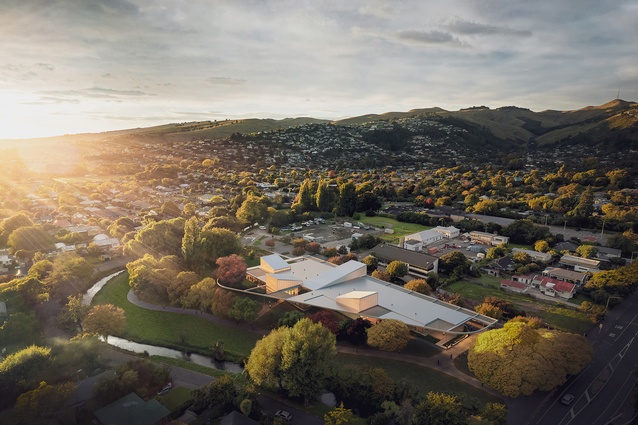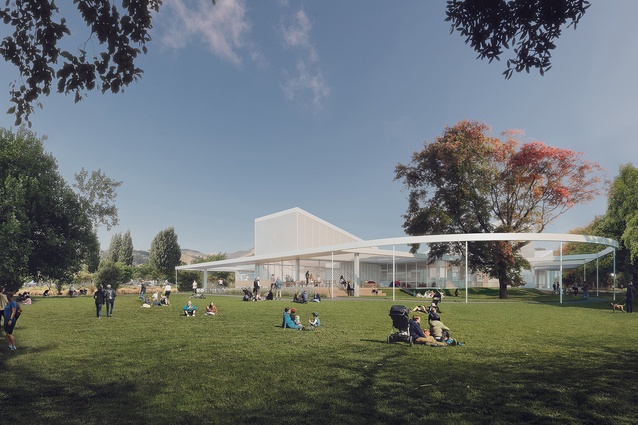Reconnecting with community and landscape
Following significant damage sustained during the Canterbury earthquakes of 2010 and 2011, Christchurch’s South Library and Service Centre was temporarily strengthened to NBS code.
In 2023, the Council engaged Ignite Architects to design a replacement for the 20-year-old facility, with the new build — Ōmōkihi — to remain on the same site on the banks of the Ōpāwaho Heathcote River, with a similar footprint to that of the former Warren and Mahoney-designed building.
Construction on Ōmōkihi will see the retention of the existing foundation slab with an additional raft slab to be placed on top. “The re-use of this component as part of the brief offers savings in cost, construction time and carbon emissions,” explains project architect Paul Anselmi, “and the new slab provides seismic resilience as well as a raised floor level to make the new building less flood-prone.”

Ignite’s design reconnects the building with the river running to the north and east. “The original building was built to provide protection from solar gain by way of solid walls along the northern face and, subsequently, the building was disconnected from the river corridor,” says Anselmi. “However, the surrounding landscape and community have evolved and this new design considers how the space is currently used, including by the weekly Farmers’ Market.”
To help reconnect to the river, the architects have introduced a courtyard on the northern edge of the building, which cuts through and connects the main entrance and foyer to the river corridor. When visitors enter the building from the southern edge, they are oriented towards the river and can see through to the landscape that surrounds it.
Minor additions to the footprint accommodate a flexible community meeting space and the café, and the main roof plane follows the flow of the river. “The roof is kept low to provide a human scale and deep eaves on the northern face protect the building from overheating in the summer months,” says Anselmi. Emerging above the low roof plane, four tall pop-up lanterns sit above four key functions of the building, acting as beacons and providing internal light-wells and a form of wayfinding.
Construction is expected to commence in 2025.













